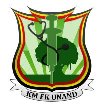muhamadfakhri
New In FK


Angkatan : 2010
Posts : 24
Join date : 2010-12-21
UKM/Organisasi : FSKI(baru ikut medica) , DPM , dan MRC
 |  Subject: Islam and Mathematics Subject: Islam and Mathematics  Sun Jan 02, 2011 6:33 pm Sun Jan 02, 2011 6:33 pm | |
| next POSTmonggo dibaca dan tinggalkan komen bermanfaat yaaa - Spoiler:
Today, mention of the word Islam conjurs up images of fanatical terrorists flying jet airplanes full of people into buildings full of even more people, all in the name, they say, of their god. In an equally sad vein, the word Baghdad brings to mind the unscrupulous and decidedly evil dictator Saddam Hussein. Both images are as unrepresentative as they are understandable, a sad reflection on the ease with which a handful of crazed fanatics, lacking the ability or the wit to bring about change by peaceful means, can hijack not just a plane or a country but an entire cultural heritage and its associated religion. For those of us in mathematics, and by extension all scientists and engineers, the sadness is even greater. For the culture that these fanatics claim to represent when they set about trying to destroy the modern world of science and technology was in fact the cradle in which that tradition was nurtured. As mathematicians, we are all children of Islam.
Following the advent of Islam in the seventh century, Islamic forces attacked and conquered all of North Africa, most of the middle East, and even parts of Western Europe, most notably Spain. The capital of this empire, Baghdad, was established on the Tigris River. Its location made it a natural crossroads, the place where East and West could meet. Baghdad quickly became a major cultural center.
With the emergence of a new dynasty, the Abbasids, in the middle of the eighth century, the Islamic Empire started to settle down politically, and conditions emerged in which mathematics and science could be pursued. By and large, the early mathematical work done by Arabic scholars was predominantly practical, and not very deep — certainly nothing like the mathematics of the ancient Greeks a thousand years earlier. Nevertheless, the subject appears to have been viewed as important and prestigious. Early Islamic scholars imported to Baghdad books on astronomy and mathematics from India.
Early in the ninth century, the Abbasid caliphs decided to adopt a more deliberate approach to the cultural and intellectual growth of the empire. They established the House of Wisdom, a sort of ninth century academy of science, and started to gather together scholarly manuscripts in Greek and Sanskrit, together with scholars who could read and understand them. Over the following years, many important Greek and Indian mathematical books were translated and studied, leading to a new era of scientific and mathematical creativity that was to last until the 14th century.
One of the first Greek texts to be translated was Euclid’s Elements. This had a huge impact, and from then on the Arabic mathematicians adopted a very Greek approach to their mathematics, formulating theorems precisely and proving them formally in Euclid’s style. Like Greek mathematics, which was defined more by the common language in which it was written and carried out, rather than the nationality of the practitioners, Arabic mathematics was determined largely by the common use of Arabic by scholars of many nationalities, not all of them Arabic or Muslim, spread throughout the Islamic Empire.
One of the earliest and most distinguished of the Arabic mathematicians was the ninth century scholar Abu Ja’far Mohammed ibn Musa Al-Khwarizmi, who was an astronomer to the caliph at Baghdad. His name indicates that he was from the town of Khwarizm (now Khiva), on the Amu Darya river, south of the Aral Sea in what is now Uzbekistan. (Khwarizm was part of the Silk Route, a major trading pathway between Europe and the East.) Al-Khwarizmi’s full name can be translated as “Father of Ja’far, Mohammed, son of Moses, native of the town of Al-Khwarizmi”.
Al-Khwarizmi wrote several books that were to be enormously influential. In particular, his book describing how to write numbers and compute with them using the place-value decimal system that came out of India would, when translated into Latin three hundred years later, prove to be a major source for Europeans who wanted to learn the new system.
In fact, Al-Khwarizmi’s book on arithmetic with the Hindu-Arabic numbers was so important, it appears to have been translated several times. Many translations began with the phrase “dixit Algorismi” (“so says Al-Khwarizmi”), a practice that led to the adoption in medieval times of the term algorism to refer to the process of computing with the Hindu-Arabic numerals. Our modern word “algorithm” is an obvious derivation from that term.
Another of Al-Khwarizmi’s manuscripts was called Kitab al jabr w’al-muqabala, which translates roughly as “restoration and compensation”. The book is essentially an algebra text. It starts off with a discussion of quadratic equations, then goes on to some practical geometry, followed by simple linear equations, and ending with a long section on how to apply mathematics to solve inheritance problems. The Englishman Robert of Chester translated Al-Khwarizmi’s algebra book from Arabic into Latin in 1145. The part dealing with quadratic equations eventually became famous. Such was the influence of this work that the Arabic phrase al jabr in the book’s title gave rise to our modern word “algebra”.
After Al-Khwarizmi, algebra became an important part of Arabic mathematics. Arabic mathematicians learned to manipulate polynomials, to solve certain algebraic equations, and more. For modern readers, used to thinking of algebra as the manipulation of symbols, it is important to realize that the Arabic mathematicians did not use symbols at all. Everything was done in words.
One of the most famous Arabic mathematicians was ‘Umar Al-Khayammi, known in the West as Omar Khayyam, who lived approximately from 1048 to 1131. Although remembered today primarily as a poet, in his time he was also famous as a mathematician, scientist, and philosopher, doing major work in all those fields.
It was largely through translations of the Arabic texts into Latin that western Europe, freshly emerged from the Dark Ages, kick-started its mathematics in the tenth and subsequent centuries.
It was around the tenth century that “cathedral schools” sprang up in many parts of Europe,. Designed to train clerics, they concentrated on the trivium (grammar, logic, and rhetoric), with more advanced students going on to the quadrivium (arithmetic, geometry, music, and astronomy). Their creation helped spur an increased interest in mathematics. To fuel that interest, scholars turned to the ancient works preserved by the Islamic culture, many of them in Spain. For instance, Gerbert d’Aurillac (945-1003), later to be Pope Sylvester II, visited Spain to learn mathematics, then returned to France where he reorganized the cathedral school in Rhiems. He re-introduced the study of arithmetic and geometry, taught students how to use the counting board, and even used Hindu-Arabic numerals — though apparently not the full place-value system we use today.
In the centuries that followed, many European scholars spent time in Spain translating Arabic treatises on various subjects. Latin was the language of the European scholars, and thus the target language for the translations. Since few European scholar knew Arabic, however, the translation was often done in two stages, with a Jewish scholar living in Spain translating from the Arabic to some common language and the visiting scholar then translating from that language into Latin. In the same way, many ancient Greek texts, from Aristotle to Euclid, were also translated into Latin, whereupon they began to make an impact in the West.
In addition to the translations of Al-Khwarizmi’s works, of particular note was the appearance in 1202 of Fibonacci’s book Liber abaci, which described the Hindu-Arabic place-value system for representing numbers, and explained how to compute with them. Fibonacci’s treatment was so good that it arguably had more influence than any other source on the eventual acceptance of the new number system around the world, including Al-Khwarizmi’s writings that had come much earlier.
The full story of Fibonacci is a fascinating one, which I will turn to in a future column. The point I want to make now is that it was through translations of the Arabic texts that western Europe was able to develop its own mathematical traditions so rapidly, paving the way for the scientific revolution in the seventeenth century and thence to the scientific and technological world we take for granted today. Many of those Arabic texts were themselves translations of still earlier Greek works from a thousand years earlier.
Without the dedication and commitment to science of the Islamic scholars of the 9th to the 14th century, who both preserved important scientific works and pushed forward the limits of mathematical and scientific knowledge, it is not at all clear that Western Europe would have become the world leader in science and technology. And had that not been the case, it is unlikely that the United States (as we know it today) would have inherited that leadership role.
I suspect that Osama bin Laden, as an educated man from a very wealthy family, is fully aware of the crucial role played by Islam in the development of the West’s scientific tradition. I doubt that the same is true for the hordes who pour out into the streets of Iraq and Pakistan in his support, to rejoice the slaughter of men, women, and children they have never met, living in countries they have never visited. I doubt also that a sense of Islam’s ancient tradition of scientific scholarship and learning is possessed by the fanatical few who, at bin Laden’s bidding, believe that the surest way to achieve immortal greatness in the eyes of their god is to commit mass murder as a first step towards turning back the advances in science and technology that they see as so evil, and returning humankind to the Stone Age.
Ignorance, we used to say, is bliss. Maybe that was once the case, although I very much doubt it. Be that as it may, I think that the clear message of September 11 and the events that have unfolded in the months since then, is that ignorance is dangerous, leaving the gullible ignorant wide open to manipulation by unscrupulous and evil individuals. It is also, as I have tried to indicate, deeply sad.
As mathematicians, we are all children of Islam.
semoga bermanfaat yaaa DOK !AMBO GA NOLAK KALAU DIKASIH- Spoiler:
| |
|
m
Anak Unand


Angkatan : 2010
Posts : 67
Join date : 2010-12-21
 |  Subject: Re: Islam and Mathematics Subject: Re: Islam and Mathematics  Mon Jan 03, 2011 12:36 pm Mon Jan 03, 2011 12:36 pm | |
| TS, jangan terlalu copy paste donk. kan yang baca jadi gak antusias, kurang komen dari TS soalnya. gimana sih, suntik aja nih MOD!  | |
|
lowegule
New In FK


Angkatan : 2010
Posts : 20
Join date : 2010-12-22
 |  Subject: Re: Islam and Mathematics Subject: Re: Islam and Mathematics  Mon Jan 03, 2011 2:04 pm Mon Jan 03, 2011 2:04 pm | |
| Yap, jangan asal copas, di indonesiakanlah... Bhs. Inggris butuh waktu utk mencernanya...
| |
|
muhamadfakhri
New In FK


Angkatan : 2010
Posts : 24
Join date : 2010-12-21
UKM/Organisasi : FSKI(baru ikut medica) , DPM , dan MRC
 |  Subject: Re: Islam and Mathematics Subject: Re: Islam and Mathematics  Mon Jan 10, 2011 7:51 pm Mon Jan 10, 2011 7:51 pm | |
| - mejikrizki wrote:
- TS, jangan terlalu copy paste donk. kan yang baca jadi gak antusias, kurang komen dari TS soalnya. gimana sih, suntik aja nih MOD!
 kalau ga di kopas malah jadi ga asik lagi jik.lagian kan niat nya share bung | |
|
muhamadfakhri
New In FK


Angkatan : 2010
Posts : 24
Join date : 2010-12-21
UKM/Organisasi : FSKI(baru ikut medica) , DPM , dan MRC
 |  Subject: Re: Islam and Mathematics Subject: Re: Islam and Mathematics  Mon Jan 10, 2011 8:00 pm Mon Jan 10, 2011 8:00 pm | |
| BUAT MOMOD ama MIMIN kalau kurang berkenan apus aja yaaaa POST ini | |
|
